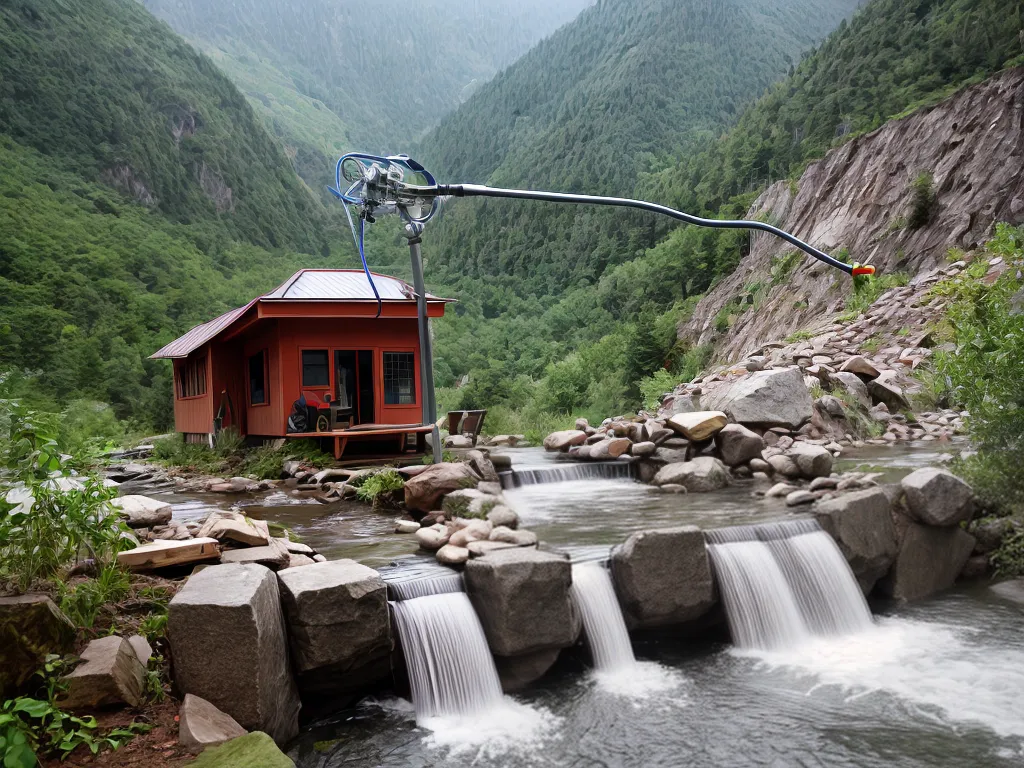
Introduction
Building a small hydroelectric generator at home can be a fun and rewarding project. Hydroelectricity harnesses the power of moving water to generate electricity cleanly and sustainably. With some basic materials and a little bit of elbow grease, I can build a simple system to provide electricity on a small scale.
In this comprehensive guide, I will walk through all the steps I need to take to successfully construct a homemade hydroelectric generator. I’ll cover the following topics in depth:
Selecting the Right Location
Choosing the optimal location is crucial for my home hydroelectric project. Here are some key factors I need to consider when picking a site:
-
Water flow - I need a location with a reliable, fast-moving stream or river. The greater the water volume and velocity, the more power my system can generate.
-
Head height - This refers to the vertical drop in the water from the intake point to the outflow. More head = more power potential. Even a few feet of head height can work.
-
Accessibility - The site needs to be reasonably easy to access for construction and maintenance. Being able to divert some of the water flow will also be helpful.
-
Permitting - I'll need to research permitting requirements for my area. Diverting water from streams often requires approvals.
After scouting a few possible spots, I have decided on constructing my hydro system on the creek running through my backyard. The steady flow and 5 foot head height give me an adequate hydro resource to work with.
Turbine and Generator Selection
Two main components I need are a turbine to capture the water's energy and a generator to convert that mechanical power into electricity.
Turbine Types
-
Impulse turbine - Uses the velocity of water to turn the runner and operates best with high head heights. A Pelton wheel is a common impulse turbine.
-
Reaction turbine - Relies on water pressure and flow to propel the runner. Good for low head sites. Propeller turbines and Francis turbines are reaction turbines.
For my application, I believe a propeller turbine is the most suitable since I'm working with low head height. These are simple to construct and install.
Generator
I plan to use a permanent magnet alternator, which can generate AC power from the mechanical rotation of the turbine. I will need to match my alternator size to the expected power output from the turbine.
Intake Design
To divert water from the stream to my turbine, I will need to build an intake structure. Key components include:
-
Intake screen - Prevents debris from entering the system. I can build one using wire mesh.
-
Pipeline - I will use PVC pipes to carry water from the intake to turbine. The diameter needs to match my desired water volume.
-
Control valve - Allows me to regulate water flow. This gives me the ability to perform maintenance and repairs.
I will construct a gravity-fed intake without any pumping, since I have adequate head height difference. The intake screen will filter debris, then 6-inch PVC pipes will carry the water downstream to my turbine.
Turbine Housing
I need to build a secure housing for my propeller turbine. Some design considerations:
- Waterproof sealing to prevent leaks.
- Easy access for maintenance and repairs.
- Supports and braces to handle water pressure.
- Nozzle positioned to optimize water flow over turbine.
I plan to construct a turbine housing out of concrete in my backyard using forms. The housing will have a side access panel, double sealed for waterproofing. My PVC supply pipe will connect to a nozzle angled to hit the turbine blades.
Power Output and Storage
My small 500 W permanent magnet alternator can output about 3 kWh per day on average. To store and use this energy, I will need:
-
Charge controller - Regulates power from the generator to optimally charge batteries.
-
Batteries - Deep cycle lead-acid batteries to store electricity.
-
Inverter - For converting DC output to standard 120V AC power for household use.
I will size my battery bank for 1-2 days of storage capacity. With the charge controller preventing overcharge, this will give me reliable power on cloudy days if needed. Any excess generation will power electrical loads in my home.
Construction and Installation
Time to build! Here are the key steps I will follow:
- Construct turbine housing and establish suitable foundation.
- Build water intake system and lay PVC pipe.
- Install propeller turbine, connected to alternator.
- Mount alternator and align to turbine.
- Test water flow over turbine.
- Connect output wiring to charge controller, batteries, and inverter.
I will carefully align the turbine and alternator, then do initial tests at low flow to check rotation smoothness. Once fully wired up, I can gradually increase water flow to start generating clean hydropower.
Maintenance
To keep my system running properly over the long-term, I will need to perform periodic maintenance:
- Inspect intake screen and clear any debris buildup.
- Check turbine housing for leaks and reseal if needed.
- Confirm alternator/turbine alignment has not shifted.
- Check belt tension on alternator pulley.
- Test batteries and replace if degraded.
- Monitor charge controller and inverter function.
Catching any issues early and doing preventative maintenance will extend the life of my hydroelectric components.
Conclusion
Constructing my own small hydroelectric generator has been an extremely rewarding DIY project. I now have the ability to produce clean, renewable electricity to power my home using the flowing creek out my back door. With the right location and a systematic planning approach, building a home hydropower system is an achievable goal. AnyDo-It-Yourselfer with basic skills can follow in my footsteps!